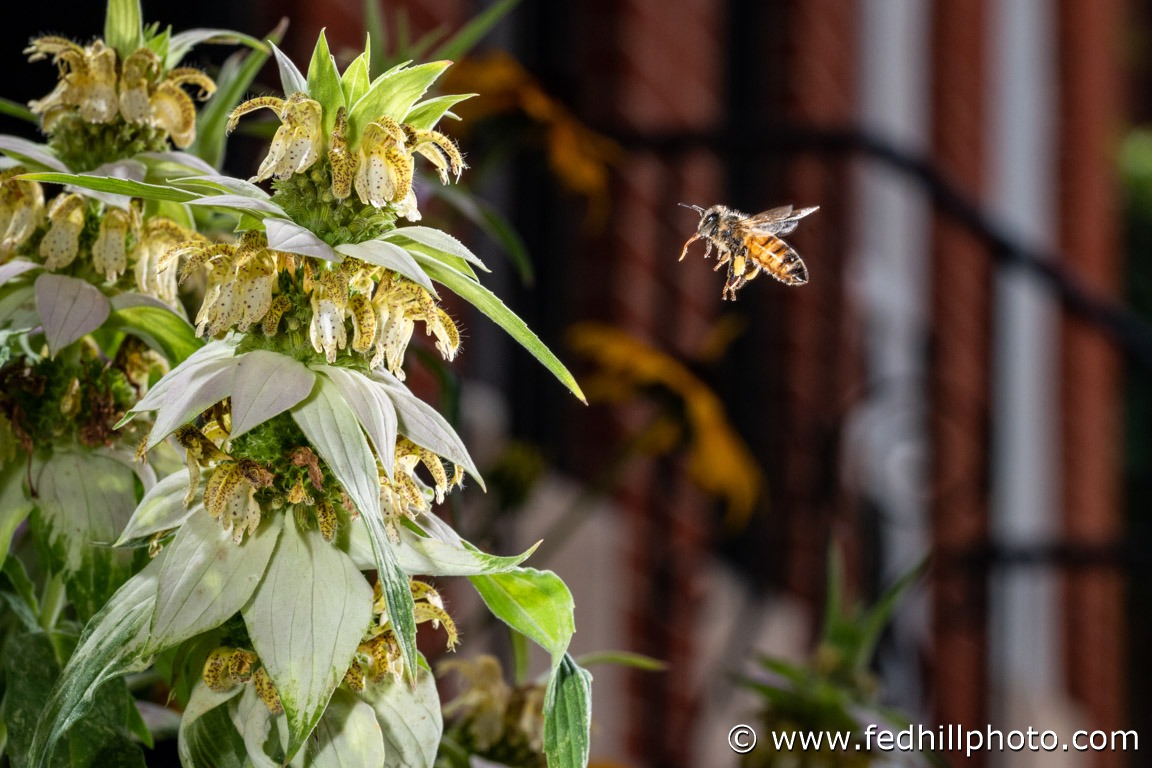A European or Western honey bee (Apis mellifera) flies towards Spotted Bee Balm (Monarda punctata) in Baltimore, Maryland
When you’re asked to think of a bee, this is likely the one that pops into your head. The European or Western honey bee (Apis mellifera) is the most common of honey bees and exists on every continent except Antarctica. Humans have domesticated European honey bees and harvested their honey for thousands of years. Humans likely introduced European honey bees to North America in the 1600s, and this one was photographed in my planter box outside my home in Baltimore. I deliberately left in the rowhouses and marble steps in the background because I wanted to convey that one can create an environment for life, even right in the middle of a city. This particular European honey bee has already been foraging, as evidenced by the yellowish pollen on the hind legs. European honey bees, like bumblebees, are very effective pollinators. Both types of bees have specially shaped hind legs containing long hairs that form a pollen “basket”, trapping pollen for transport. As the bees move from flower to flower, some of the pollen falls off and fertilizes the flower.
European honey bees are also used in scientific studies which observe hive social behavior and communication. In particular, I find it fascinating that a foraging European honey bee can communicate to others in the hive the location of a food source through a series of dance like body movements and vibrations. And, I think that’s probably what happened with my Spotted Bee Balm (Monarda punctata). When my Spotted Bee Balm first bloomed, there were initially just one or two European honey bees. The bees probably flew back to the hive and let everyone know where the buffet was, because over the next few days quite a few more showed up.



